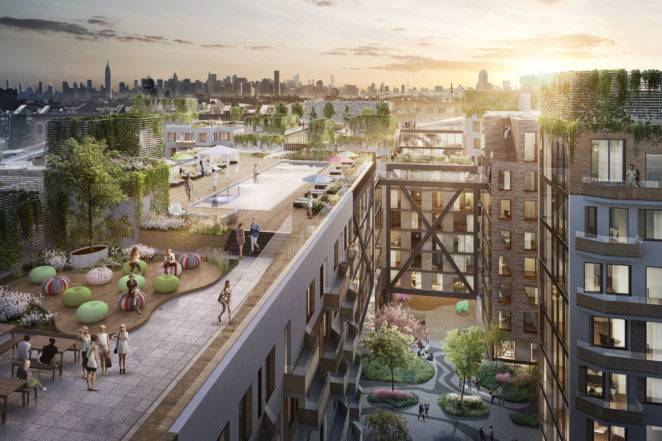
This is part 3 of a 4-part series by Walker Thisted, BuiltWorlds producer and resident architect, when he visited New York last month for the fifth annual Architizer A+ Awards.While he was there, he caught up with some members of the BuiltWorlds network, in addition to other innovative architecture firms in the industry.
The field of architecture might be at a loss for how to address some of the broader urban and environmental concerns of cities around the world. But — it does not struggle with the continued production of buildings of varying scales that are remaking cities such as Houston, Austin, San Francisco, Los Angeles, Chicago, Boston, and New York.
The building boom in New York is taking place on a scale far greater than any other city and with a pace that rivals the boom that took place in the 1920s. Future generations will likely look at this period in the city’s history as one in which New York remade itself through investment in large projects such as the rebuilding of the World Trade Center and redevelopment of the Financial District, the creation of the 2nd Avenue Subway, the redevelopment of the Hudson Yards, the building boom along the Brooklyn and Queens shore of the East River, and the construction of super tall buildings along 57th Street in Manhattan.
How ODA leverages zoning in design
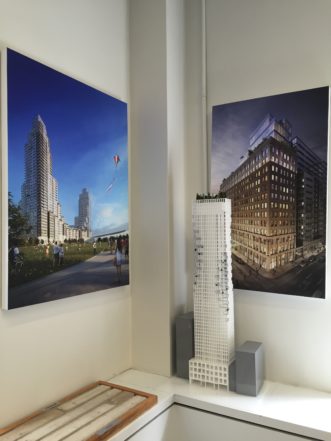
As was the case with the building boom that took place in the 1920s, zoning is playing a significant role in how buildings are designed and constructed.
ODA has developed a reputation as a firm that looks carefully at zoning and other legal constraints of a particular site — more so than any of its peers — in order to better understand what can be built and maximize the value and quality of life they deliver to their client in the proposed solution.
The firm got its start in 2007 when Eran Chen and Christian Bailey joined forces to design a condo development in the first home of Tiffany’s on Union Square. The firm rode out the financial downturn with a large commission that sustained the practice, and it emerged, poised to capitalize on new developments using their ability to show developers a clear return on investment in amenities that would help them distinguish their buildings from other new and existing construction.
More than just design: improving quality of life
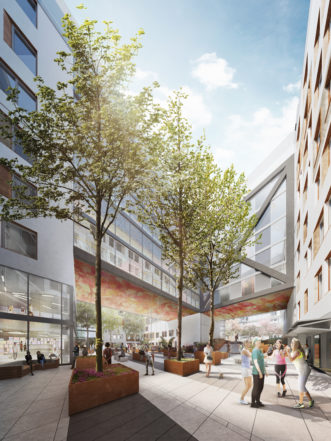
ODA’s interest in enhancing quality of life through amenities is fueled by Eran Chen’s deeply held belief that recent development in New York and elsewhere has led to increasingly tall buildings that provide limited connection between neighbors and the natural environment, ultimately leading to a sense of alienation and isolation that drives many urban dwellers to the suburbs.
Instead of accepting this, ODA believes that it is possible to create spaces that serve the fundamental needs of the human soul through access to personal and shared green space and organizational tactics that support common space and the intersection of people that create and strengthen communities. But these benefits don’t only cater to the wealthy — ODA feels these opportunities should be incorporated into all future projects regardless of the specific budget or final cost of the dwelling.
How zoning and amenities come together
They have been able to convince owners and developers of this possibility through a careful understanding of legal, zoning, and construction constraints that allow them to optimize the use of space and build efficiently. Terraces and other green spaces were among the amenities they encouraged developers to explore the 40+ projects that they have developed since their founding.
These spaces were often incorporated into a three-dimensional façade that could be inhabited and simultaneously serve as a compelling design element that infused the building with energy and a strong sense of identity when view from the street. Through deconstructing the traditional flat façade in the case of 2222 Jackson, apartments were given added living space that, though it costed more, allowed the developer to maximize the allowable floor-to-area ratio under the zoning laws and thus maximize profits from sale of the condos.
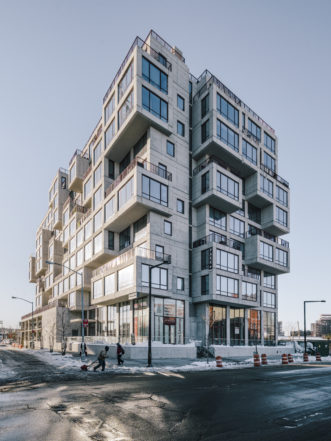
The outside of 2222 Jackson Ave (Miguel de Guzman)
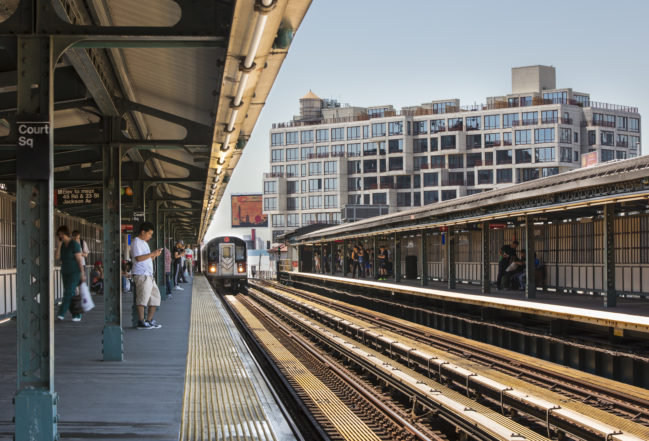
A view of 2222 Jackson from the nearby train stop (Pavel Bendov)
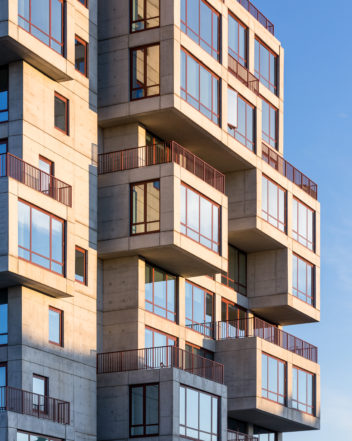
A close up of the facade of 2222 Jackson (Pavel Bendov)
Other ODA projects around the world
ODA has taken the idea of using constraints to drive design and maximize value to other cities in the U.S. and around the world.
For a building they proposed in Toronto, the firm used the siting of the building along the waterfront to define the views that would be most desirable. They then manipulated the form to twist, so that as many apartments as possible could take advantage of the views.
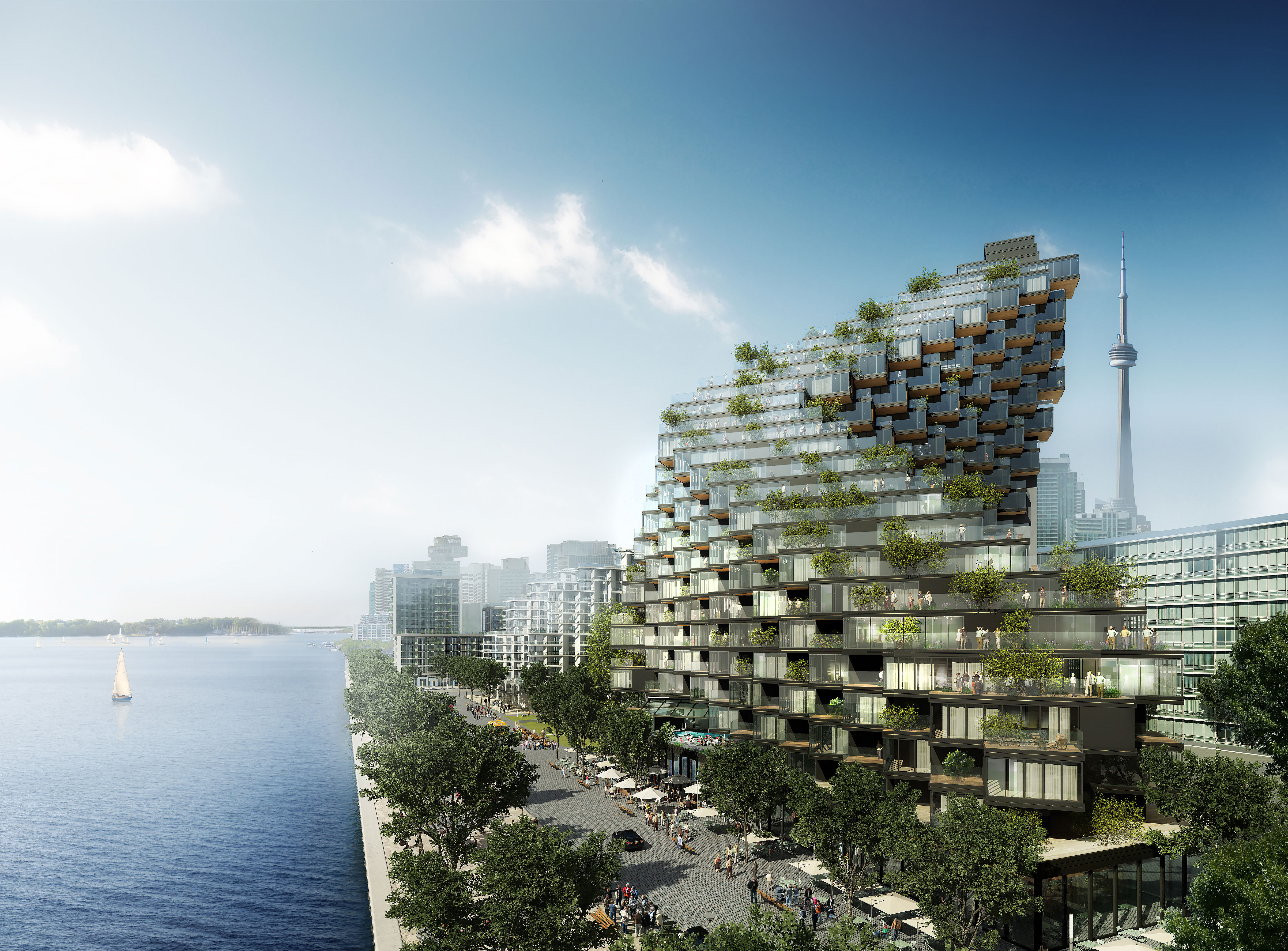
The Toronto proposal’s twisting facade (By Encore)
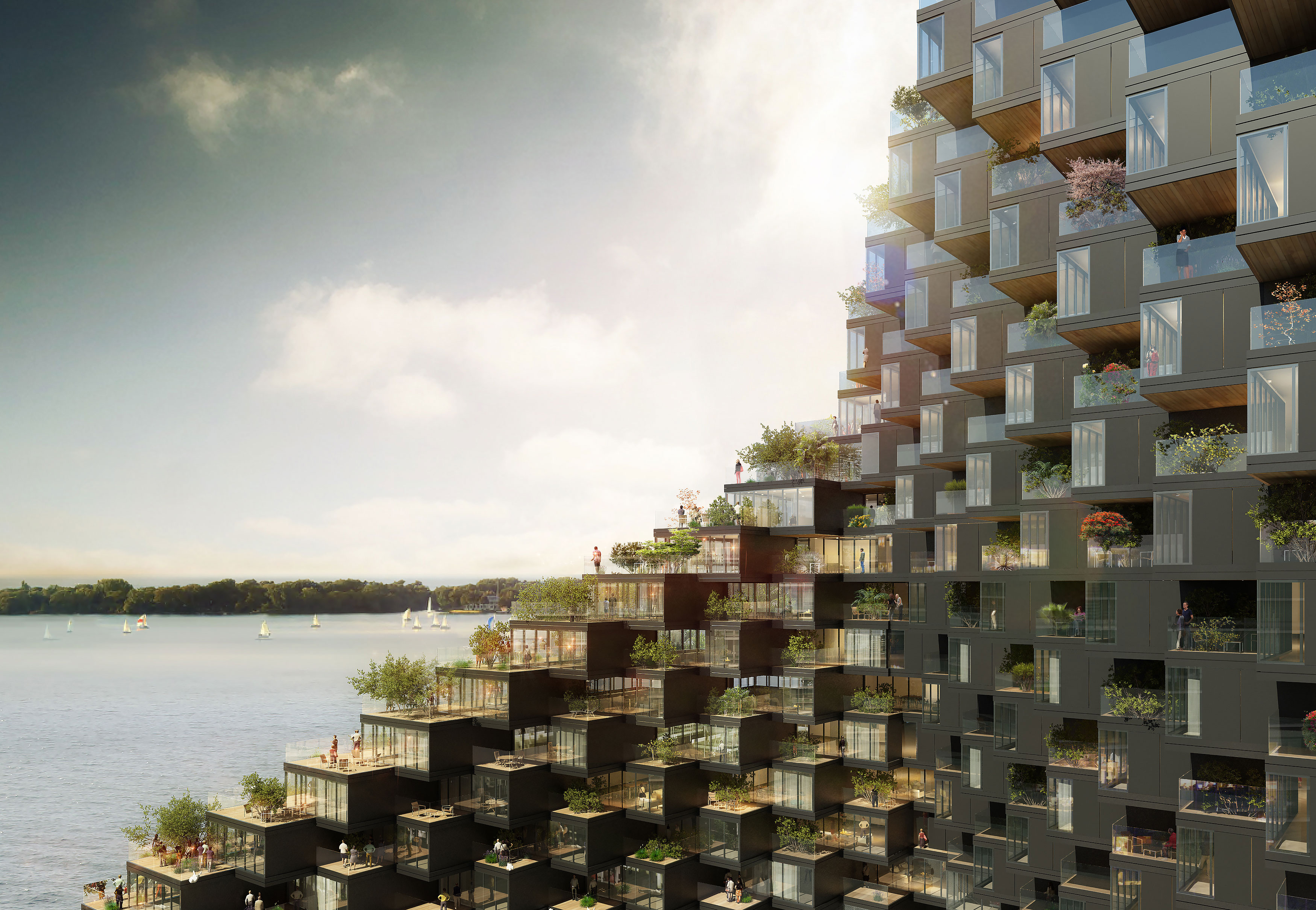
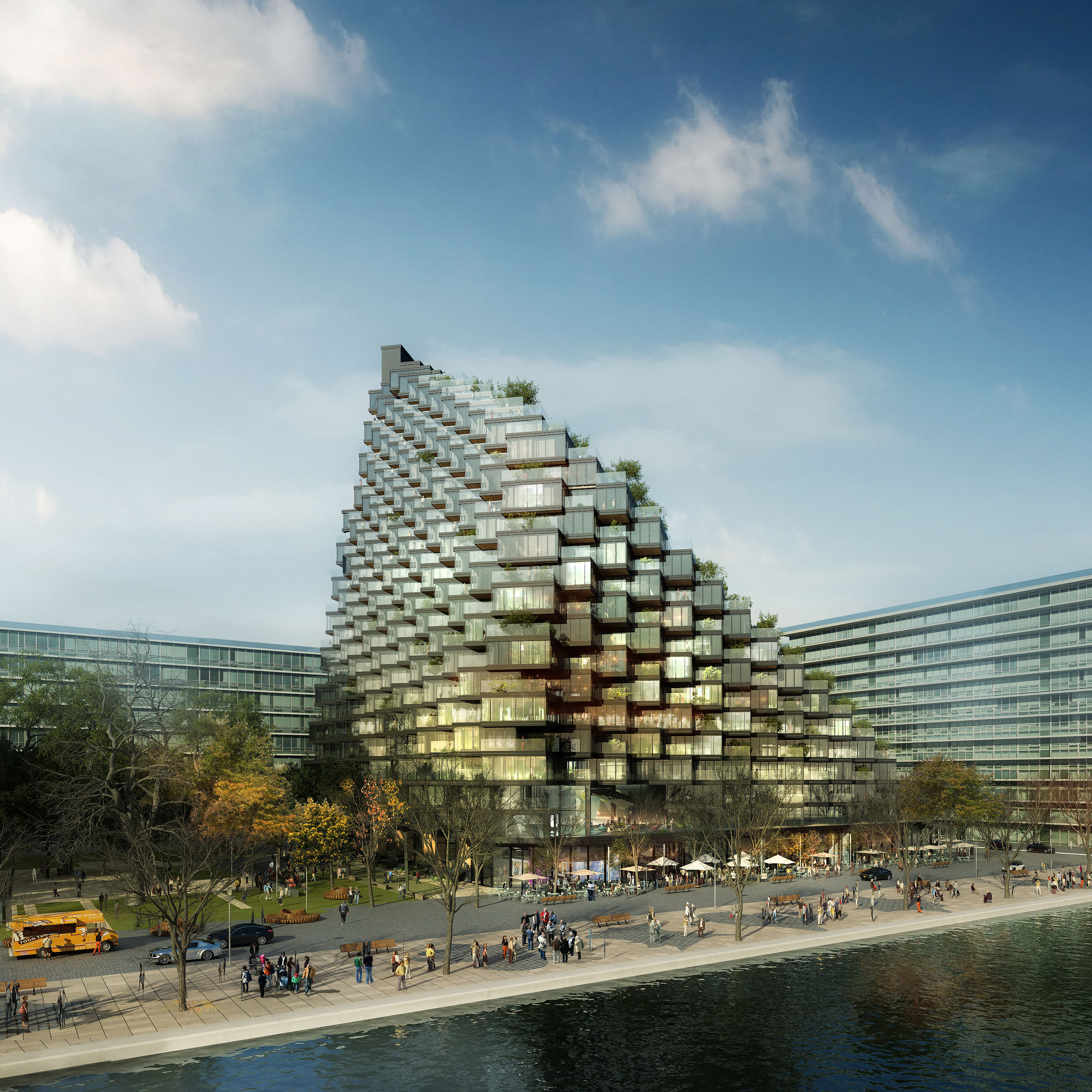
Another angle of the twisting facade (By Encore)
In the case of Kent in Bushwick — three buildings totaling roughly 900,000 sq. ft. — they looked at ways in which they could rotate the volumes and create corner conditions to maximize views of the East River and enhance overall value.
When designing the Rheingold development that includes 1000+ units and spans almost 1,000,000 sq. ft., ODA took a slightly different approach that considered social responsibility to the surrounding neighborhood, instead of making an extensive alteration that might drive in new residents and higher real estate prices. Rather, they chose to open the courtyards to the city, added art studio spaces for community members, programmed the roof, and provided a number of amenities to create a sense of place.
ODA is also exploring the use of augmented reality at Bushwick to provide current and future residents with a tool to see the past and future of the site, through a virtual twin of the building and site.
Incorporating past and present
As ODA’s work evolves, these projects are paying closer attention to the historical context in which they exist. Beyond the augmented reality component at Bushwick, their work on the redevelopment of a landmarked former sugar factory in Dumbo, Brooklyn includes a crystalline façade that nods to its former use.
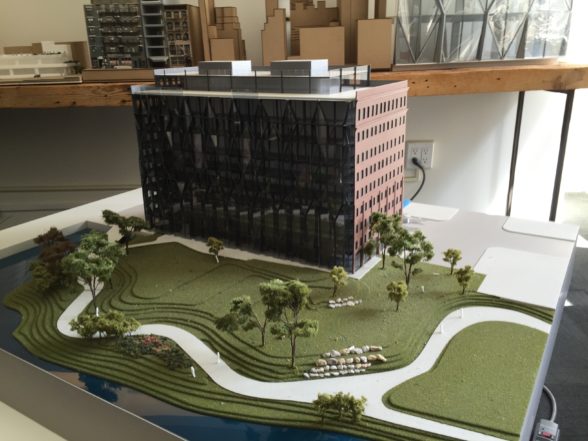
In addition, the firm is paying attention to international competitions for cultural and institutional projects that will allow them to explore a new set of histories and constraints and expand their vocabulary and capacity to address diverse uses.
Recently, ODA received an honorable mention in a design competition for the National Library of Israel. The design includes a massive monolithic triangular volume, which contains the core reading room, that rests on a rising earth mound and features a circulation core at its opposite tip. Pierced by light and a grand atrium, the building offers a variety of cultural and spatial experiences that draw the visitor through the building.
BuiltWorlds will certainly look forward to seeing how other ODA projects will show how a space can evolve in the near future.

Discussion
Be the first to leave a comment.
You must be a member of the BuiltWorlds community to join the discussion.